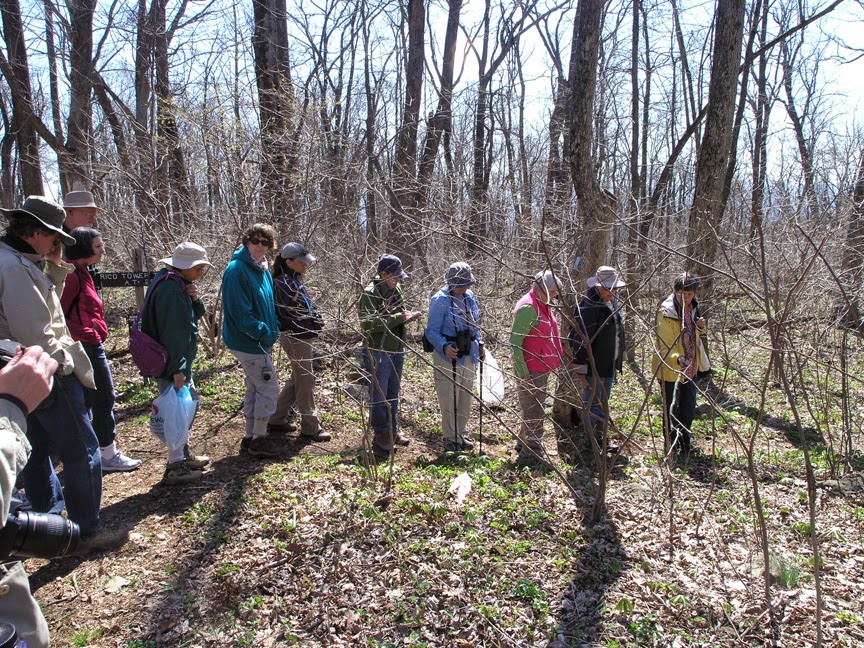 |
| Skunk Cabbage flowers (Symplocarpus foetida) |
 |
| Skunk Cabbage flowers. |
Yesterday I went out with the Virginia Native Plant Society (VNPS) to a site new to me: the Cool Spring River Campus of Shenandoah University. Cool Spring was the site of a famous battle during the Civil War that took place in 1864, and was acquired by Shenandoah University in 2013 as a way to preserve the historic battlefield. The 195-acre parcel lies along the eastern shore of the Shenandoah River and contains many lovely old trees and fields.
Our excursion focused mainly on the Skunk Cabbage that is currently flowering. The Skunk Cabbage (Symplocarpus foetida), a member of the Arum family, produces a curious flower consisting of a spathe that contains a spadix, which has numerous small flowers along its surface.
This plant exhibits one botanical oddity: it is thermogenic--it can generate heat from cellular respiration alone. The flowers, which emerge in early spring, can melt snow on the ground. This allows the spadix inside the ovoid-shaped spathe to maintain a constant temperature up to 20 degrees higher than the ambient air, for optimal development of the flowers. The female flowers in each spadix mature first, then the stamens emerge, thus preventing self-pollination.
 |
| Skunk Cabbage Spathes emerging from the muddy ground. |
The morning started out with a bit of rain, but by afternoon, when we assembled, the rain had stopped and it was unseasonably warm--about 64 degrees. Gradually the sun came out and it turned into a beautiful afternoon.
There wasn't much to see here--botanically speaking--except for the Skunk Cabbage, so after a while I peeled off from the group and got my sketching gear from the car while the rest went on to explore the trail along the river.
 |
| Field sketch of Skunk Cabbage flowers, watercolor, 6" x 9". |
I set up right by the first couple of flowers--the stinky scent was perceptible, particularly the pollen when touched, but it was not overwhelming, thank heaven. Bees were buzzing around the flowers, despite the fact that they smell like carrion and are supposed to be pollinated by beetles or other ground insects. The colors, particularly the mottling, were challenging, and the shapes too. I spent about an hour creating my small sketch. By then the sun was coming out, but it was a bit late to rejoin the VNPS group, they were just returning from the river trail.
 |
| The river bank |
I continued on the trail along the river on my own. There were many lovely old trees here, many of them Sycamore maples of noble proportions, and many people were about, enjoying the first stirrings of spring. It hadn't rained for a couple of weeks, and the water was crystal-clear.
 | |
| Old Sycamore maples along the river. |
 |
| Trail along the Shenandoah River. |
I got back to the parking lot a little after four, as the clouds were starting to move in again, and headed home. This is a promising new area for botanical sketching, I hope to return when the spring ephemerals begin to emerge.


































